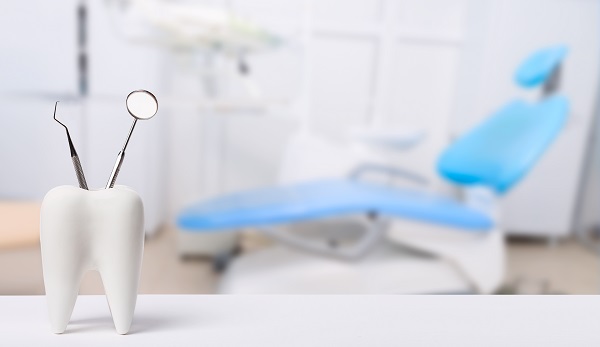How Dental Practices Are Managing PPE per CDC Guidance

In order to limit the spread of infectious diseases in dental offices, practices use certain PPE per CDC guidance. Dentists and other personnel interact closely with a patient’s mouth, which puts staff in direct contact with blood and bodily fluids. Wearing personal protective equipment is one way that offices maintain a sanitary, safe environment.
Required PPE for dental personnel
The guidelines currently used for choosing and implementing PPE are put in place by the Centers for Disease Control and Prevention in order to give dental offices and other medical practices the information needed to run a safe operation. These policies outline what equipment should be available to all dental personnel and how it is to be utilized.
Gloves
A person’s hands are the part of the body that most often comes into contact with different surfaces and other people at any given moment. While proper handwashing can help remove microorganisms and bacteria from the surface of the skin, gloves are necessary any time a dentist is working with a patient and examining the mouth. To maintain adequate sanitary measures, these gloves should be discarded promptly after finishing with a patient, and hands should be cleaned before placing on a new pair of gloves and moving on to the next person.
There are several types of gloves that are used in a dental office for varying purposes:
- Examination gloves: These are nonsterile or sterile medical gloves that are FDA regulated and used for nonsurgical procedures, including laboratory work and patient examinations. Natural rubber latex, polyvinyl chloride, nitrile and polyethylene plastic are all acceptable materials for these purposes.
- Surgical gloves: Designed specifically for surgical procedures, these gloves must always be sterile and regulated by the FDA. Only natural rubber latex, nitrile and latex and synthetic combinations can be used.
- General-purpose gloves: Nonmedical gloves are not regulated by the FDA and do not always need to be disposed of after use. They are not to be used in any medical setting and are only adequate for cleaning or handling chemicals. In addition to latex and nitrile, these gloves may be made from chloroprene, neoprene tor butyl rubber.
Protective eyewear
Debris from using dental tools or splashes from blood, saliva and other bodily fluids can harm the eyes. Both dental staff and patients should wear protective eyewear with side shields during cleanings and other procedures. While this type of PPE per CDC guidance can be reused, all glasses should be cleaned frequently.
Surgical mask
Wearing a mask around the face can prevent dental personnel from transmitting or catching an infectious disease by blocking bodily fluids and large-particle droplets. These medical devices are not designed for reuse and should be discarded after each use.
Protective Clothing
Medical gowns, scrubs, jackets and other protective clothing should be worn over regular clothes and removed before leaving the office. Ideally, tops should include full-length sleeves.
Conclusion
Wearing the proper PPE per CDC guidance allows dentists to treat patients while keeping themselves and anyone else who enters the office safe. The use of this equipment is most effective when paired with prevention strategies and education measures for both staff and patients.
Request an appointment here: https://dragonflydentalportcharlotte.com or call Dragonfly Dental of Port Charlotte at (941) 676-9225 for an appointment in our Port Charlotte office.
Check out what others are saying about our services on Google: Read our Google reviews.
Related Posts
A lot of general dentistry care is focused on the prevention of tooth decay. It is a common issue, and one that can be reversible in the early stages; however, if left untreated, it can become serious. Knowing the signs of tooth decay and understanding the risks of not giving it the proper care can…
Finding a qualified general dentistry professional is an important task made more difficult if the thought of visiting the dentist causes anxiety, as it does for so many people. Remember that the dentist you choose will serve as an important partner for your oral health and overall wellness, as poor oral hygiene can lead to…
Most people understand that brushing and flossing are the basics of good oral hygiene, but general dentistry professionals say there is much more you can do to ensure your mouth remains healthy throughout your life. Strong teeth and gums allow you to communicate easily, enjoy good food, and avoid the pain and embarrassment associated with…
A tooth abscess is one of the most serious problems treated in general dentistry. It occurs due to an infection in the tooth or gums. The body sends white blood cells to the site to fight the infection. These form a yellowish-white fluid called pus. An abscess occurs when a pocket of pus forms in…
